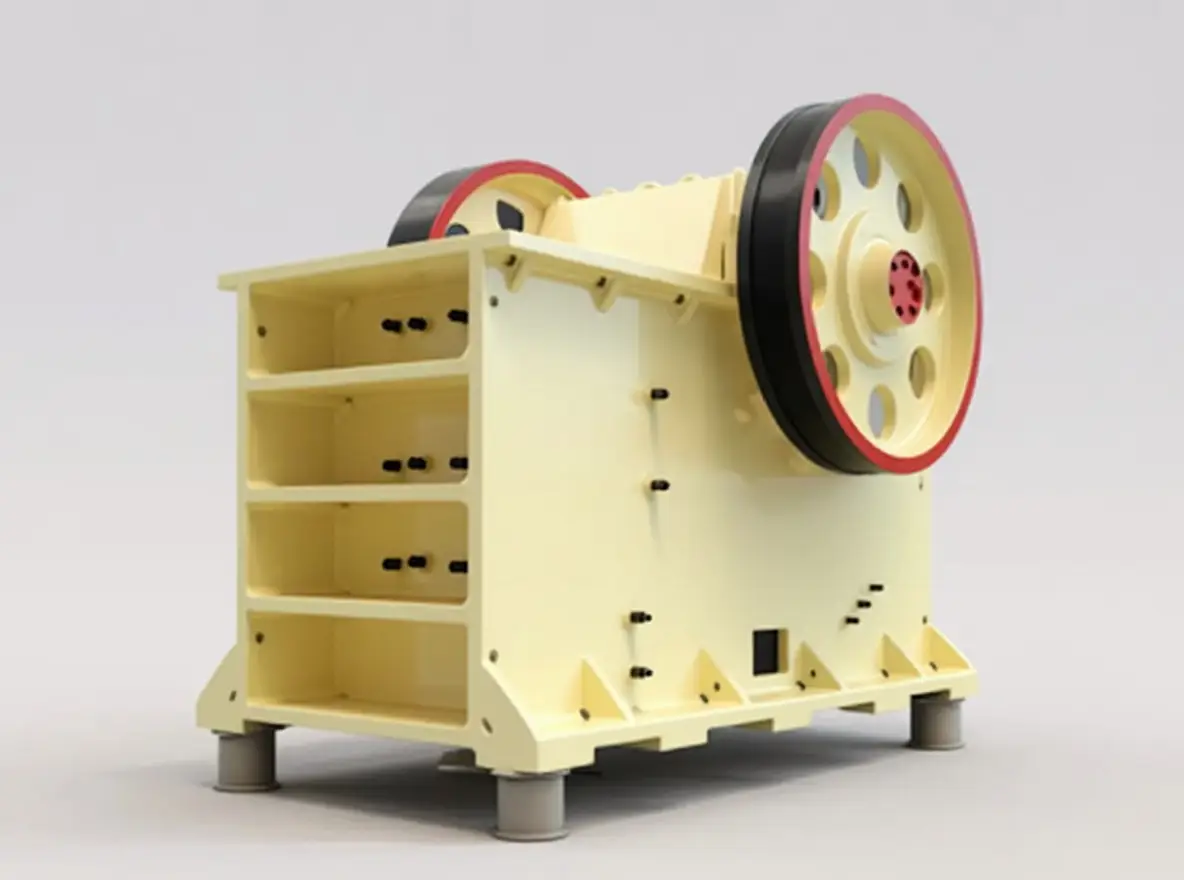Service
Jaw Crusher
Reliable Crushing Solution for Various Materials
The jaw crusher is widely used in industries such as mining, cement, construction, and concrete for crushing a variety of materials including pebble, calcite, granite, quartz, concrete, dolomite, bluestone, iron ore, limestone, and construction waste. It is suitable for crushing ores or rocks with a compressive strength below 250 MPa, making it an ideal choice for coarse and medium crushing applications in mines, building materials, and infrastructure projects.

Jaw Crusher
Structure and Working Principle
The jaw crusher consists of several main components: jaw plates (or jaw dies), toggle plate, electric shaft, flywheel, and other parts. Its operation relies on two jaws – one fixed and one movable. The fixed jaw is positioned vertically or slightly inclined and is mounted on the crusher’s frame. The movable jaw is positioned with a tilt and forms a crushing cavity with the fixed jaw.
During operation, the movable jaw moves periodically toward and away from the fixed jaw. When the jaws move apart, raw material enters the crushing chamber. When the jaws close, the material caught between them is crushed by bending, splitting, and impact forces. Crushed material then exits through the lower discharge port.
Types of Jaw Crushers
Jaw crushers are categorized based on the swing mechanism into two main types: double toggle and single toggle jaw crushers.
They can also be classified by feed port size into three groups: large, medium, and small. Large jaw crushers have a feed port width exceeding 600 millimeters, medium-sized crushers range between 300 and 600 millimeters, and small crushers have feed ports smaller than 300 millimeters. This classification helps users select the appropriate crusher size based on their specific feed material and production requirements.
Detailed Working Process
During operation, the movable jaw reciprocates toward the fixed jaw in a controlled motion that crushes the material through compression and splitting. When the jaws separate, crushed material exits through the discharge opening by gravity. Raw material is fed into the top inlet of the crusher and pushed into the crushing chamber, where it is forced against the chamber walls and broken down into smaller pieces.
The motion of the movable jaw is driven by an eccentric shaft that passes through the machine’s frame. The shaft is powered by a motor through a pulley system and supported by a flywheel that maintains balance during movement. This system is designed to withstand heavy shock loads, abrasive conditions, and high temperatures common in crushing environments.
